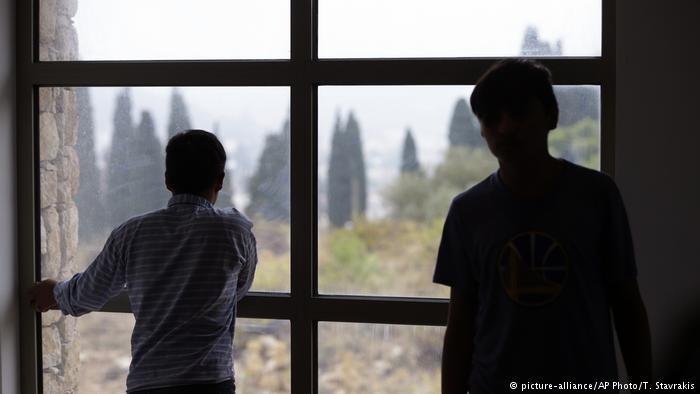Following a record-breaking year of irregular migrant arrivals to the Canary Islands, the month of January saw a significant decline. Meanwhile, the legal framework for the redistribution of migrant minors who arrived on the Canaries could take an important step this week.
Irregular migrant arrivals to Spain's Canary Islands are down, at least compared to the previous year: According to the Spanish news agency EFE citing Spanish Interior Ministry figures, the month of January saw 34 percent fewer arrivals than in January 2024.
While 4,752 migrants managed to reach the Atlantic archipelago last month, the figure for the first month of last year was 7,270.
Last year set an all-time record when close to 49,000 migrants reached the island group.
The Canaries continue to be the main gateway for migrants to Spain. In January, close to 90 percent of all arrivals were registered there.
The total number of arrivals to Spain also declined by 32.4 percent compared to the same period last year -- the first decrease in 18 months.
According to the local news outlet Canarias 7, the only Spanish territory that saw an increase in arrivals last month was the enclave of Melilla in Northern Africa, where six people jumped the fence that separates the territory from Morrocco (up from three in January 2024).
It's important to point out that one month is a short period of time, which is to say that it's unclear at this point whether the decrease is a trend or a temporary anomaly.
In other EU countries, including Italy, the new year started with a significant increase in irregular migrant arrivals: According to Canarias 7, twice as many people reached Italian shores last month compared to January 2024, most of them from Bangladesh. Among them were 377 unaccompanied minors, according to reports.
Read AlsoPakistan to the Canary Islands: Does a migrant shipwreck shed light on a new route?
Distribution of migrant minors
The reported drop in migrant arrivals to the Canary Islands comes in the midst of a controversial debate about a legal framework for relocating some 4,000 of the around 5,800 unaccompanied underage migrants who are currently staying on the island group.
So far, the progressive government and the conservative opposition in Spain have failed to reach an agreement.
The decree, which according to Canarias 7 was proposed by the Canaries' president and Spain's Basque Country, (?) is currently under review by Spain's central government.

If given the expected go-ahead, Canarias 7 reported, the decree will presumably go through the Sectoral Conference on Children next week and Spain's lower house of Parliament, the Congress of Deputies, after that.
Spain's Minister of Youth and Children is moreover expected to meet with the Canaries' president Fernando Clavij this Thursday (February 6), to discuss the matter, with the latter calling this week "decisive" in defining the criteria for distribution, the Spanish news agency Europa Press reported on Monday. The goal is to relocate 4,000 minors from the Canary Islands and 400 from Ceuta to mainland Spain by June, according to EFE.
Earlier this month, Spain's minister for territorial policy called for an urgent "humanitarian response for underage migrants" amid facilities struggling to host unaccompanied minors on the Canaries.
